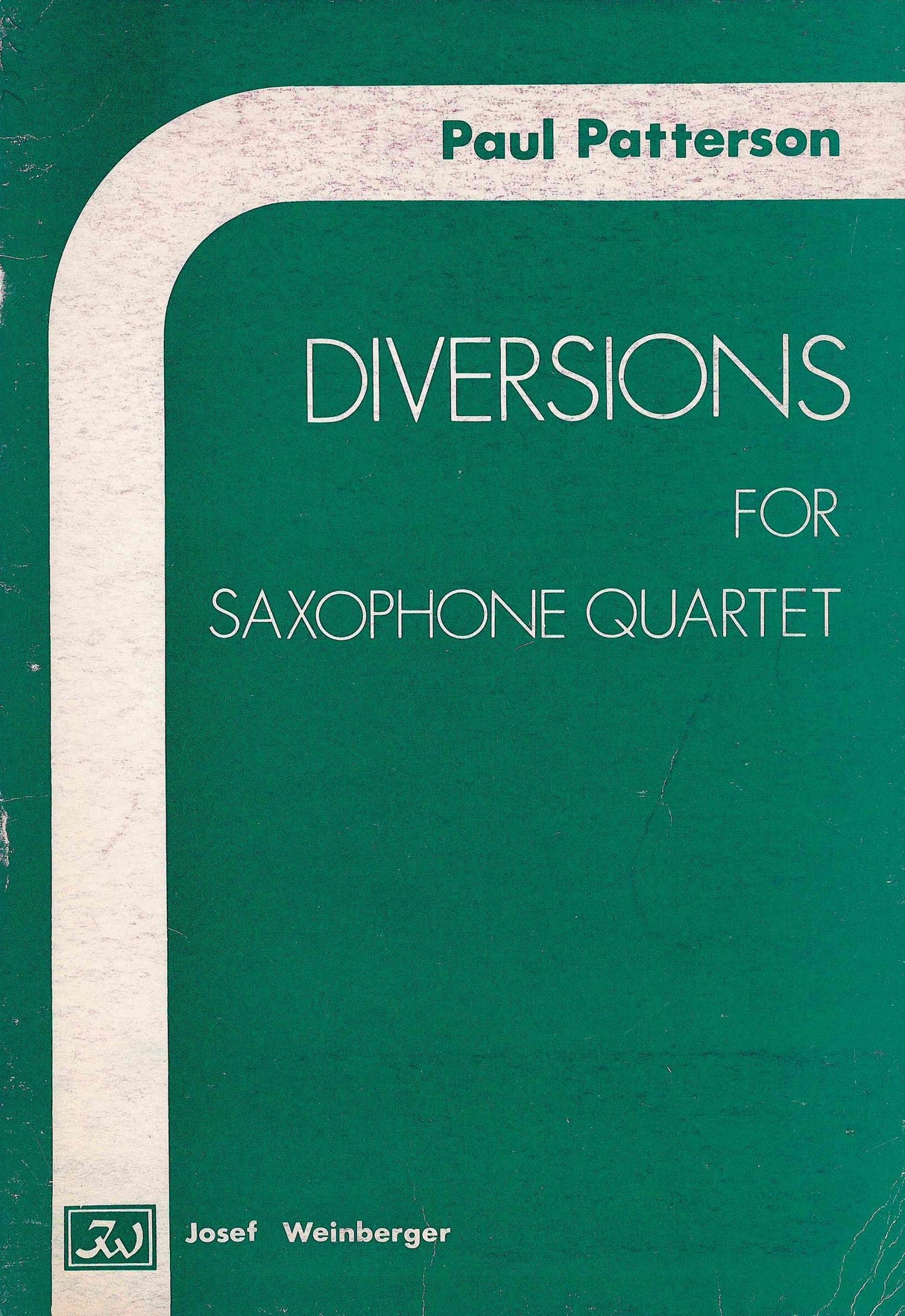Patterson: Diversions
Item is backordered and shipping time is unknown right now.
- Composer: Paul Patterson (1947-)
- Instrumentation: Saxophone Quartet (Soprano, Alto, Tenor, Baritone)
- Work: Diversions, Op. 32
- ISMN:
Description
I. Gusty; II. Blowing Blue; III. Sea Breeze
This piece was commissioned by the London Saxophone Quartet for the 5th World Saxophone Congress, held in London in 1976.
The three movements are each named after a different "wind" which depict different aspects of the saxophone's character. The first, Gusty, is a lively and somewhat aggressive movement, demonstrating the power and agility of the instruments. Much use is made of accents and sudden dynamic changes as the interest is passed from one instrument to another; in the same way as leaves may be tossed this way and that on a blustery day.
Blowing Blue is much gentler in character and reflects the more lyrical side of the saxophone. Written in the jazz idiom, it begins with a pensive alto solo, blossoming into an easy and rhythmic blues in which each instrument in turn takes an improvisatory solo.
The third movement, Sea Breezes illustrates the playful aspect of the saxophone. It is a "backwards set of variations" – from a rhythmically and melodically complicated opening the framework of the piece gradually emerges. It is an exciting and, again, somewhat aggressive movement, but at the height of the confusion there suddenly emerges a drunken waltz, followed by the final tumult with Rule Britannia on the wrong beat of the bar as it rushes to its witty conclusion.
Publishers use a lot of words to describe what they sell, and we know it can be confusing. We've tried to be as clear as possible to make sure you get exactly what you are looking for. Below are descriptions of the terms that we use to describe the various formats that music often comes in.
Choral Score
A score for vocalists that only contains the vocal lines. The instrumental parts are not there for reference. Generally, cheaper than a vocal score and requires multiple copies for purchase.
Facsimile
Reproductions of the original hand-written scores from the composer.
Full Score
For ensemble music, this indicates that the edition contains all parts on a single system (there are not separate parts for each player). In larger ensembles, this is for the conductor.
Hardcover
Hardbound. Generally either linen-covered or half-leather.
Orchestral Parts
Similar to a wind set, this is a collection of parts. In the case of strings, the numbers listed are the number of copies included, though generally these are available individually (often with minimum quantities required).
Paperback
When publishers offer multiple bindings (e.g. hardcover) or study scores, this is the "standard" version. If you're planning to play the music, this is probably what you want.
Performance / Playing Score
A score of the music containing all parts on one system, intended for players to share. There are not separate parts for each player.
Set of Parts
For ensemble music, this indicates that there are separate individual parts for each player.
Solo Part with Piano Reduction
For solo pieces with orchestra, this is a version that contains a piano reduction of the orchestra parts. For piano pieces, two copies are typically needed for performance.
Study Score
A small (think choral size) copy of the complete score meant for studying, and not playing. They make great add-ons when learning concertos and small chamber works.
Vocal Score
A score prepared for vocalists that includes the piano/organ part or a reduction of the instrumental parts.
Wind Set
For orchestral music, this is a collection of wind and percussion parts. The specific quantities of each instrument are notated.
With Audio
In addition to the printed music, the edition contains recordings of the pieces. This may be an included CD, or access to files on the internet.
With / Without Fingering (Markings)
Some publishers prepare two copies - a pure Urtext edition that includes no fingering (or bowing) suggestions and a lightly edited version that includes a minimal number of editorial markings.


